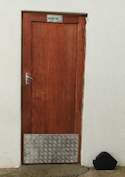
The impact of rodents on maize production is often overlooked, but they may cause production losses of up to fifteen percent on smallholder and commercial farms.
As a matter of fact, rodents were estimated to have caused 54 377 ha worth of maize losses in 2012, according to an article published in SA Grain, Gerbils in agriculture: Impact and ecologically based control.
Dr Lourens Swanepoel of the Department of Zoology at the University of Venda identifies the Gerbilliscus spp. (gerbils, nagmuise/springhaas rotte) as the main culprits in South Africa.
Damages are usually restricted to germinating and emerging seedlings, with the gerbils typically digging up the seed or feeding on the roots and pits of young seedlings. Damages can easily be seen as ‘crop circles’ reflecting the burrowing system of these creatures.
To reduce damages, Dr Swanepoel advises farmers to identify factors that affect the gerbil population. Firstly, grain wastages should be kept to a minimum during harvesting and wasted corn cobs should be picked up or be grazed by livestock post-harvest.
Secondly, farmers should encourage natural predation by, for example, putting up owl boxes and maintaining natural strips of land to accommodate mammalian predators. It has been estimated that ten pairs of barn owls can remove roughly 14 600 rodents a year.
Besides this, farmers could use traps, baits or chemical control to control rodent populations. When doing so, care should be taken to prevent damages to other species that are no threat.
Maize Post-harvest Management
Besides insect pests, such as grain weevils, termites and grain moths, and micro-organisms, such as bacteria, fungi and certain yeasts, rodents, primarily rats and mice, may also cause severe losses to stored grain.
The rodents generally prefer foods that are rich in proteins and oil, so they may simply eat the germ of maize and leave the rest of the seed. It is estimated that one rat can daily eat an equivalent of seven percent of its body weight. But there is also another danger, in that the rodents contaminate produce with their excrement and other pathogens, such as fleas, turning the maize unfit for human consumption.
To prevent losses and damages, storage facilities should be rodent proofed as far as possible. Doors for example, can be fitted with metal sheets to prevent rodents from chewing their way into facilities and there should not be any places around the facility that would give easy access. Holes should also be fixed that could give easy access into the buildings. The area around the facility and the facility itself should be kept clean as to not attract rodents.
Farmers may use baits and traps to monitor and manage rodent problems.